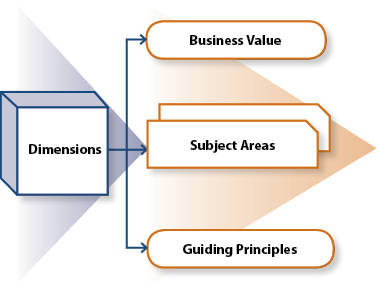… Enables Engaged Workers

“Work and life have meaning when we feel what we are doing creates worth and is in alignment with what we value.”
Marilyn Tam
First, let’s define “engaged worker.” There are many definitions, with lots of overlap. But maybe the best way is to describe how one recognizes an engaged worker. Heather Uczynski, owner of Leading Edge Business Consulting, says the following:
It’s easy to spot an engaged employee by their enthusiasm, excitement and willingness to do whatever they can to get the job done. An engaged employee actively contributes to the success of the organization and is fully involved in his/her work. Simply stated, an engaged worker puts heart and soul into their work, rather than just ‘going through the motions.’ People are more engaged when they believe they are making meaningful contributions to their organizations. Engaged employees care about the work they do. The reason they care is because they feel cared about by their employers.
The primary goal of the People dimension is to engage workers. To set the stage for the discussion, we’ll review
- The current state of worker engagement; and
- The business value that engaged workers bring to the organization.
Current State
According to Gallup’s State of the Global Workplace report for 2011-2012, only 13% of the workers in the 142 countries studied are engaged in their work, with 63% not engaged and 24% actively disengaged. The numbers for the US and Canada top the pack, but are still discouraging:
- 29% engaged – “… psychologically committed to their jobs and likely to be making positive contributions to their organizations.”
- 54% not engaged – “… lack motivation and are less likely to invest discretionary effort in organizational goals or outcomes.”
- 18% actively disengaged – “… unhappy and unproductive at work and liable to spread negativity to coworkers.”
Gallup’s “Bottom Line” states: “Business leaders worldwide must raise the bar on employee engagement. Increasing workplace engagement is vital to achieving sustainable growth for companies, communities, and countries — and for putting the global economy back on track to a more prosperous and peaceful future.” The aggregate impact of disengaged workers is staggering. According to Enterprise Engagement Alliance, “The cost of employee disengagement is profound. In the aggregate, employee disengagement is estimated to cost the US economy as much as 350 billion dollars per year in lost productivity, accidents, theft and turnover.”
Business Value of Engaged Workers
What does this mean to an organizations “bottom line?” Here’s what experts have to say:
Earning per Share (EPS) – According to the 2012 Towers Perrin Global Workforce Study, high-engagement firms achieved operating margins over 27%, while in low engagement firms, the operating margins were under 10%.
Shareholder Return – According to Aon Hewitt, highly engaged firms had a shareholder return that was 22% above average in 2010. In low-engagement organizations, shareholder return was actually 28% below average.
Profits – Higher levels of both employee satisfaction and employee engagement were associated with greater customer satisfaction, productivity, and profit, and decreased turnover and accidents. This equated to average increased annual profits of $80,000 to $120,000. (Journal of Applied Psychology)
Overall – Engaged employees work more effectively, instead of just working more; find ways to improve; share information with colleagues; develop creative solutions; provide suggestions; speak up for the organization; and try harder to meet customers’ needs, leading to repeat business (Schweyer)
People Dimension

Given the current state & business value, we’ll look at the components of the People dimension, to see how we can effectively engage workers. We’ll start with the Guiding Principles, which will steer any changes we make to current practices:
- People want to create value – This is what W. Edwards Deming called “pride of workmanship.” We all want to feel that our efforts are valuable to ourselves and our employer.
- People want to learn – Much has been written about learning organizations and the importance of on-going training. It could be new methods, advanced skill training, new tools … training that can be applied to the job to enhance the value an employee can create.
- People want to feel in control – This is a basic part of our psyche – nobody wants to feel trapped or taken for granted.
- People want to feel appreciated – This can take many forms, such as involvement in decision-making, coaching from their manager, treatment as a trusted colleague, and, sometimes, financial rewards.
- Given the opportunity, people will do great things – People simply want to feel good about their work, and when that happens they will “go the extra mile.”
Given those Guiding Principles, let’s move to the Subject Areas. These are the actual levers we use to move a Dimension from inhibiting to enabling.
Note: We’ll cover the Discussion Points as part of the QE Score, when we’ll walk through each Subject Area, and how each is scored.
The Subject Areas for the People dimension generally follow the employment cycle for a worker:
- Talent acquisition – This process starts with a vacancy, and includes:
- Job descriptions,
- Sourcing (internal external),
- Interviewing,
- Selection,
- Negotiations (compensation, time off, etc.),
- Time constraints on the hiring process, and
- Communication.
- On-boarding – Once the candidate starts, what’s done to:
- Introduce them to the corporate & team processes,
- Integrate them with the team,
- Ensure they have the proper work environment (desk, hardware, software (if applicable), special needs (if applicable),
- Help them network internally with key stakeholders,
- Introduce them to external customers (if applicable), and
- Validate success of the on-boarding process.
- Training program – What is done to ensure workers are kept up to date on appropriate training?
- Coaching / Mentoring –
- What is the organization’s approach, if any, to assigned mentors?
- How effective are the managers at coaching the workers?
- Performance reviews –
- What is the annual review process?
- What is the approach to frequent performance-related feedback?
- What is typically done with workers who are not at the desired performance level?
- Management (immediate supervisor) –
- What, if anything, does the immediate manager do that specifically enables worker effectiveness?
- What, if anything, does the immediate manager do that specifically inhibits worker effectiveness?
- What is the nature of typical manager feedback?
- Retention –
- What is the group’s current retention rate?
- Are there any active programs to improve worker retention?
What’s Next
We move to the Process dimension.
Until Then …
“Pleasure in the job puts perfection in the work.”
Aristotle

What are your thoughts? Please share your comments in the block below.